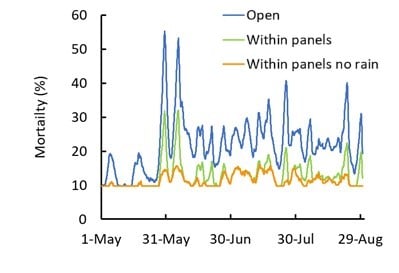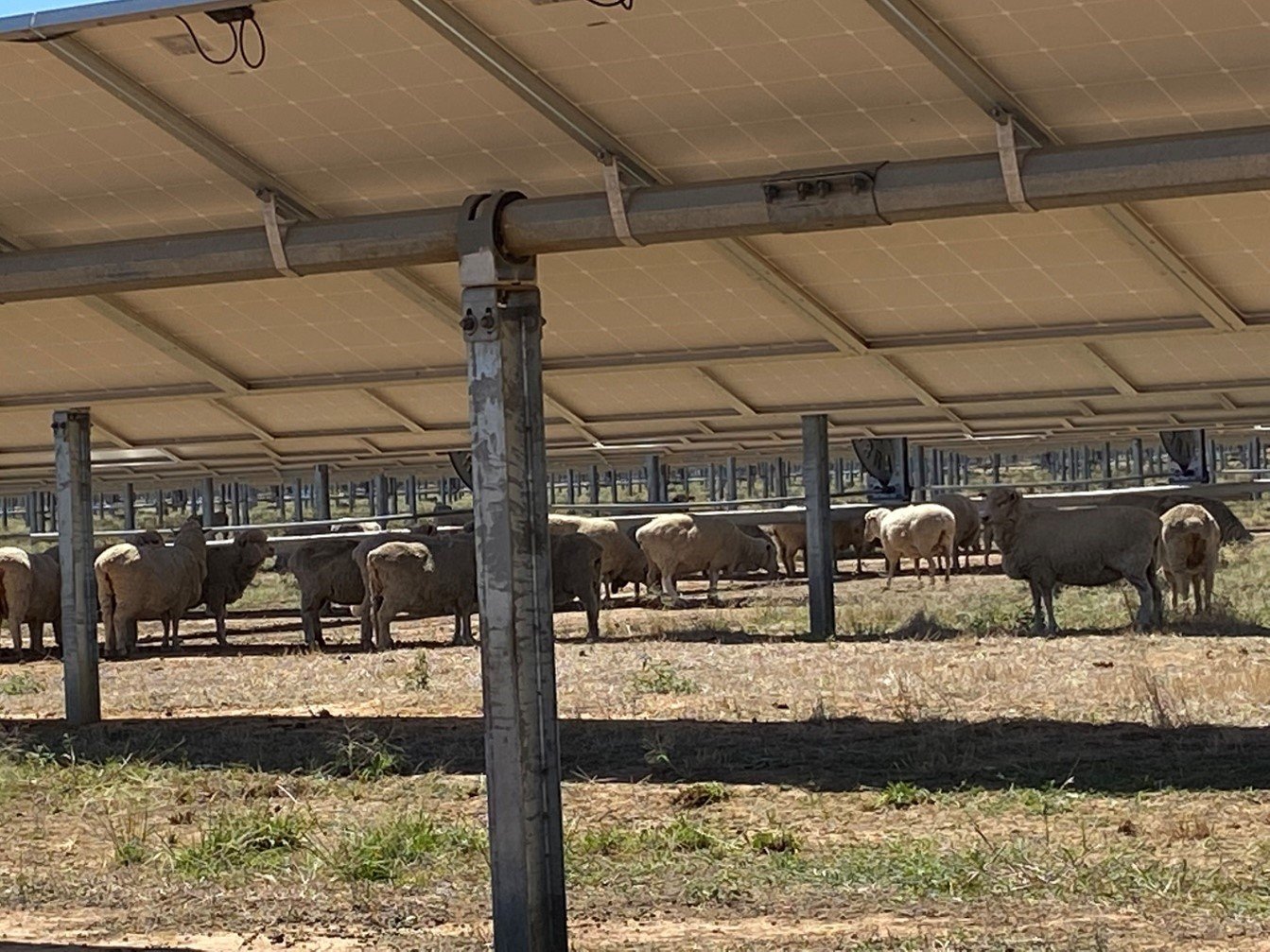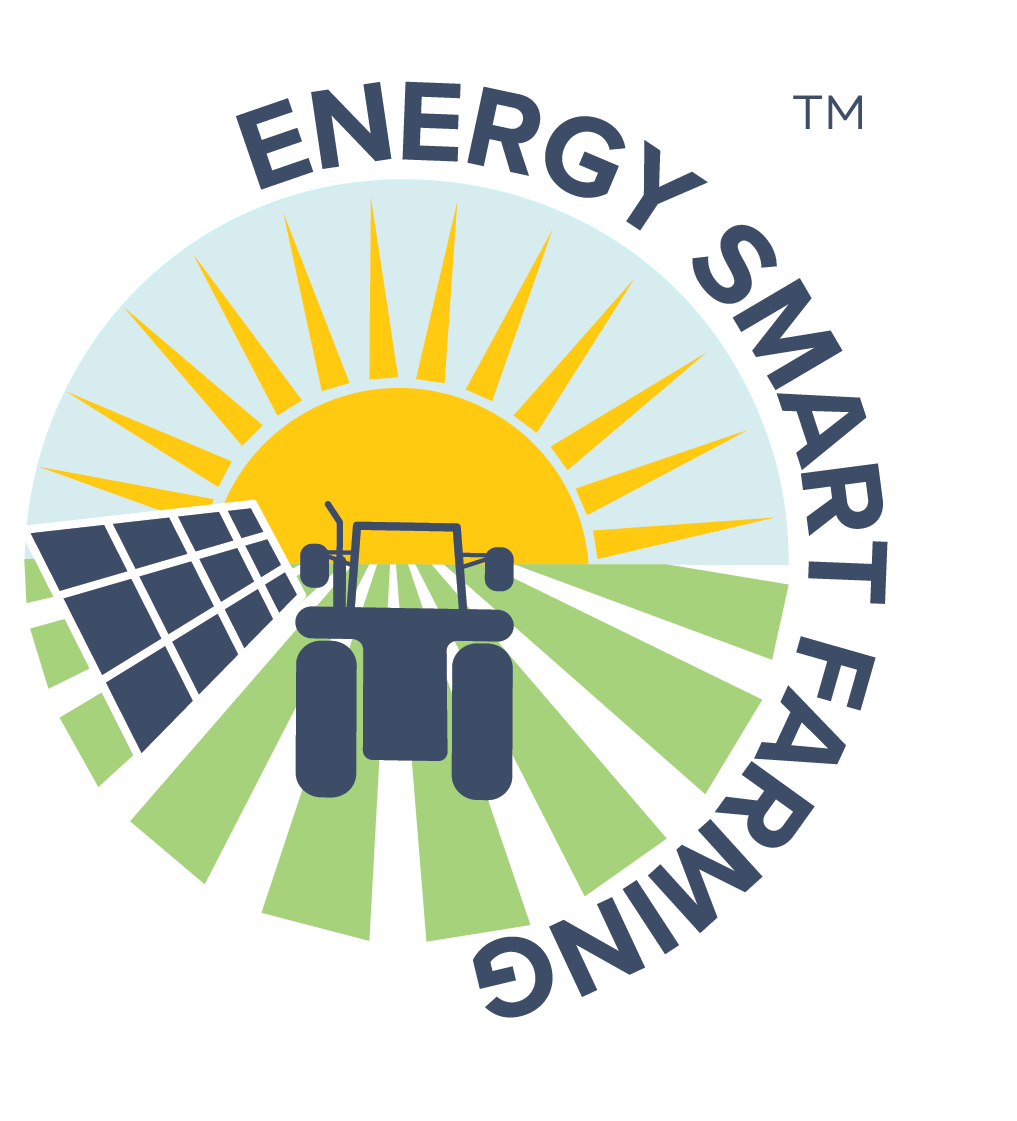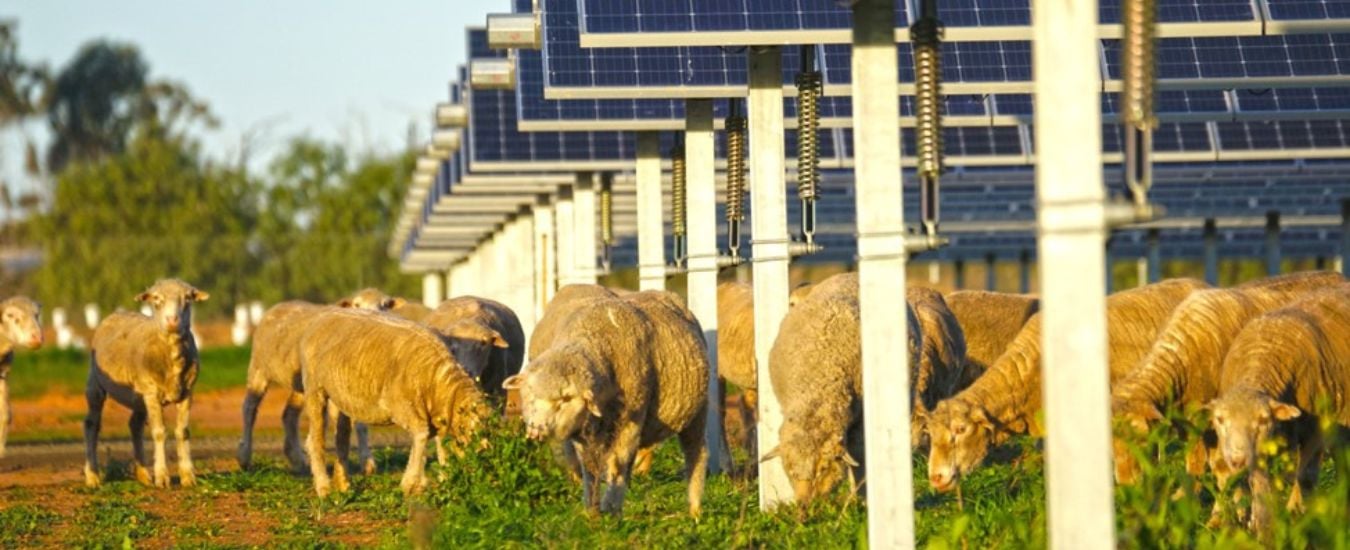As most rural communities would be aware, interest from energy companies in building commercial scale solar farms has never been higher. Among the numerous concerns expressed by potential neighbours and objectors to solar projects is that they cause a loss of prime agricultural land.
In 2020, the provision of Agriculture Energy Investment program funding enabled Agriculture Victoria Research scientists, Mary-Jane Rogers and Bruce Gill, to conduct a study to measure pasture production and climatic conditions within two large solar farms in northern Victoria. Pasture trials established strips of low growing grass species such as perennial ryegrass, kikuyu, tall fescue and a summer-growing native grass Chloris truncata under and between the solar panels. At each solar farm, one automatic weather station was installed just outside the solar panel field and another within the solar panel field and adjacent to pasture trial area. Temperature, wind speed and direction, light intensity, rain, humidity, soil temperature and soil moisture were measured at 15-minute intervals over a couple of years. Results from the measurements were analysed to learn about the climatic and growing conditions in the panel field, how they compared to the outside conditions and any influence on pasture and sheep production. The solar panels rotate through the day to face the sun (single axis tracking). At midday, when the panels are horizontal, they shade about 30 per cent of the ground while 70 per cent of the area receives normal sunshine.
Pasture production was influenced position relative to the panels, with reduced growth only observed in the dry strip directly under the panel. Higher growth occurred at times under the driplines either side of the panels and pasture production was unaffected in the wide gap between the rows of panels. A key finding was that low-growing rainfed pasture species used for sheep grazing are quite productive, within the constraint that varieties need to be low growing so as to not create a fire hazard during summer under the panels.
Measurements of windspeed within the panel field were modeled using the sheep industry standard wind-chill model (Figures 1 and 2) below. This indicated that the shelter from wind provided by the panels substantially reduced the risks of cold stress at lambing (green line in Figure 1). If lambs were also able to take advantage of the panels to shelter from rain, chill index and mortality rate is further reduced (green and orange lines in Figure 2).

Figure 1. Chill index plot for a solar farm in northern Victoria. Loss of new-born lambs increases sharply over 1000 kJ/m2/h chill index.

Figure 2. Mortality rate for twin lambs May to August 2022 for a solar farm in northern Victoria, calculated from weather data recorded at the site by a model accepted by the sheep industry.
Shade from the panels also provides lower summer temperatures that sheep may seek out during the middle of the day. Below Figure 3 shows that for an example week in January, the soil temperature at 10 cm depth at midday was up to 10 degrees cooler directly beneath the panel (shaded) than midway between panels and exposed to full sun. Sheep showed a strong preference for resting in the shade of the panels rather than in the full sun.

Figure 3. Soil temperature at 10 cm depth for an example week in January.

Figure 4. Sheep seeking shade under panels in February 2022.
The above is a snap-shot of the study findings, which have been submitted to a peer-reviewed journal. A key conclusion from the study is that agrivoltaics, in this case sheep grazing in commercial solar farms, provides mutual benefits for both sheep grazier and solar farm operator. As the operator at one farm said: “I don’t charge the sheep grazier agistment and he doesn’t charge me for keeping the grass mown.” Productivity wise, there is some loss of potential fodder production due to shading and the requirement to select low-growing pasture species to reduce fire risk. However, the amount of solar energy harvested by the combination of pasture/sheep production and electricity from the solar panels gives a much greater value per hectare than either can alone.




One comment, add yours.
Alex rozycki
Hi I am writing a paper on the full lcoe cost of solar with sheep grazing. Do you have some cost basis I could use to model this hopefully I a paper I can site.